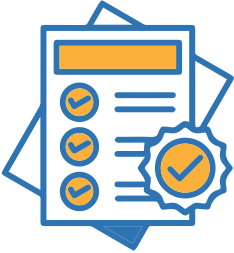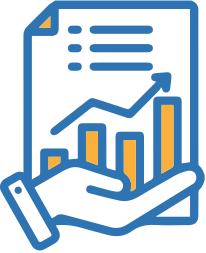Buyer Persona Development For Successful Content Marketing
One of the biggest challenges facing all companies that are trying to sell a product or service is deciphering who actually needs that product or service. If you don’t know who your audience is, then you won’t know who to target when it comes to your marketing efforts. If you target the wrong audience, you’ll be wasting countless resources trying to engage with people or businesses who have no need for what you’re offering.
Once you understand the process to accurately define your target audience is, you will not only find that your marketing efforts will become more effective, but you will also be able to tailor your marketing strategy to better meet the needs of your ideal customers.
What Is A Buyer Persona?
When you segment your existing customers into different categories, such as demographics, industries, needs, challenges, job titles, and the like, you’ll find that many of them have a lot in common. These commonalities will help you to identify who your target audience actually is. Buyer personas are fictitious representations of customers who have these details in common. They represent your “ideal” customers.
Most companies have a few different buyer personas because more than one product or service is sold, all of which can potentially be used to meet different needs and attract different personas.
By developing your buyer personas, you will give everyone in your organization a better understanding of the types of customers you’re both serving and seeking, and what their specific needs, behaviors, and concerns are.
What Does A Buyer Persona Consist Of?
In order to develop a buyer persona, you will need to delve deep into your data to collect information on your existing customers. This information will help you to segment your existing customer base and to create representations of your ideal customers. The kind of information you will use for your buyer personas is the information that allows you to tailor your marketing efforts accordingly. For example, if you notice that 35 percent of your software sales are to clients in the restaurant industry, then one of your main buyer personas should be a decision-maker who works in that industry. With this in mind, the following are some of the questions you will want to answer when developing your buyer personas:
What Are Their Demographics?
Demographics are important because they help give you an idea of how to engage with customers and can also help you pinpoint certain needs and challenges. Age, gender, location, and background are all details that you will want to fill out for your buyer personas.
What Is Their Job Function?
Your buyer personas should include their job title and what kind of responsibilities they have. For example, if a large portion of your customers is marketing directors, then at least one buyer persona should be representative of a marketing director. Other helpful information relevant to their role can include their professional background, their skill set, and their education level.
What Industry Do They Work In?
Customers in different industries have different needs. Take into account what industry your buyer persona works in, how long they’ve worked in that industry, whether their business is B2B or B2C oriented, and what is their yearly revenue.
What Are Their Motivations?
The motivations should include the customer’s goals at their job. For example, if the buyer persona is a marketing manager, then maybe their goal is to grow their company’s user base and to reach their company’s revenue goals.
What Brands Do They Currently Use?
If they are using similar products and services to what you provide (or that are related in some way), then name what brands they are currently using and what they like and dislike about those products and/or services.
What Are Their Challenges?
If the buyer persona is a CIO and you’re selling software, then one of their challenges could be trying to identify new technology that will have a measurable impact on their company.
What Are Their Barriers To Making A Purchase?
Consider how much responsibility the customer has when making a purchasing decision. For example, maybe they need to obtain approval from another person or from an entire committee before they can make a purchase, or maybe they have a limited budget to work with.
What Are Their Personal Preferences?
Personal preferences matter even in a B2B context. These preferences refer to what social media they use, which communication channels they favor, and how they perform research online.
What Are Their Fears?
Fears can include everything from overpaying for a solution, investing in the wrong solution, purchasing a solution that doesn’t work, losing their job as a result of a poor investment, or damaging their reputation.
The Importance Of Developing Buyer Personas
Because of how much effort is required to actually create buyer personas, some companies may reject the notion that they need them. Some companies may think that they already know who their audience is. The problem is that without detailed buyer personas, you won’t have a clear direction in which to guide your marketing, sales, or customer service efforts. And you won’t know who to listen to when it comes to collecting feedback about your products or services and acting on that feedback. We’ll give you a more detailed overview below of why it’s so important to develop your buyer personas.
Inform Your Marketing Strategy
With the aid of buyer personas, you’ll be able to implement a much more effective marketing strategy. For example, maybe you have a kitchen product that you developed with the everyday consumer in mind. However, it turns out that the majority of your customers are actually restaurants who have found an effective use for your product in their commercial kitchens. If you continue to target consumers who like to cook, you’ll miss out on an entire industry that’s more likely to invest in your product. You risk alienating existing customers and prospects who are actually qualified if your marketing efforts aren’t relevant to them.
Buyer personas help ensure that your marketing strategy is not only successful but cost-effective as well. Some of the specific ways in which well-researched buyer personas can help to inform your marketing strategy include:
Target The Right Prospects
No company wants to waste time trying to engage prospects who have no interest in their products or services. Buyer personas are incredibly useful in that your marketing team can use them to pre-qualify your prospects to make sure you don’t waste time and resources engaging with low-quality leads.
Inform Your Content Creation Strategy
In order for your content marketing strategy to be successful, you need to create content with a specific audience in mind. If you have developed your buyer personas, then you can tailor content that addresses the needs of each persona and increase the chances of attracting and nurturing the right prospects.
Know Where To Find Your Prospects
Knowing where to market your company is just as important as knowing who to market to. Even if you craft a message targeting the right audience, if you deliver that message on the wrong platform, it will fall on deaf ears. Your buyer personas help you identify what channels your prospects prefer.
Segment Your Marketing Campaigns
Buyer personas make it easy to segment your customers as well as your prospects for things like an email marketing campaign. This enables you to send more personalized and relevant content to each persona, which can help you nurture prospects and build stronger relationships with customers over the long run.
Improve Product/Service Development
Knowing what the specific needs, challenges, and goals of each persona are will help provide you with guidance when it comes to improving your products or developing your services. Even if you’re developing brand new products and/or services, they need to meet the needs of your actual customers. Your buyer personas provide specific details about the needs and challenges that your development team can use to successfully improve or develop products and/or services.
Improve Sales Enablement
Being able to match customers with your buyer personas will enable your sales team to more effectively engage with those customers and to meet their needs. Without buyer personas, interactions between your sales team and your potential customers will feel more forced and less personal. Your sales team will also be able to validate your personas and provide recommendations on how to fine-tune your personas more effectively as they continue to engage with both potential customers and existing customers.
Improve Customer Service
Buyer personas can help improve your customer service in a couple of ways. First, your customer service reps will have a better idea of what your customers’ values are, making it easier to engage with them. Secondly, you will know the preferred channel of communication of your customers, thereby ensuring that your customer service supports those channels.
Finally, buyer personas allow everyone in your organization to be on the same page. This means that if your customer support team is receiving a lot of feedback about your product or service, they can relay that information more effectively to your product or service development team.
Creating Your Buyer Personas
Knowing what kind of information you need to use in developing your buyer personas is one thing, actually collecting the information you need to create them is another. Finding the information you need in order to develop your buyer personas can be a challenging task. You will have to gather your information from your existing customer base. Keep in mind that you’re not just looking for hard data. You will also need information about their behaviors as well as their personal and professional motivations and challenges.
These potential sources of information below along with some data collection methods will be useful to the creation of your buyer personas.
Use Your CRM Software
Every organization should be using a CRM (customer relationship management) software. CRM software helps gather all of your customer data across multiple channels, stores it in a centralized location, and organizes it so that it’s easily accessible. This centralized organization of data allows you to pull useful data on your existing customers to develop your buyer personas. This can include information that customers provided via forms as well as data obtained through personal interactions.
Use Analytics Tools
Using a variety of analytics tools, you can find out a lot of information about your customers simply by monitoring their behavior on your website or social pages and identifying their preferences. For example, analytics allow you to identify the following:
- How your customers arrived at your website
- What communication channels your customers use to contact you
- What social channels they use most
- What types of content they are engaging with
- What offers they downloaded
- Their purchase history
Use Social Media
Social media is a fantastic place to mine data about your customers as well as your prospects, whether it’s through professional accounts, such as LinkedIn accounts, or personal accounts, such as Facebook or Twitter accounts. Most users will fill out a generous amount of information just creating their social media profiles that you can use to help create your buyer personas. This often includes information such as their age, educational background, and more. You can also use a variety of social media listening tools to monitor conversations that focus on problems and challenges that you know your products or services could solve.
Use Surveys
You can fill out your buyer personas using the information you weren’t able to access by simply asking your customers directly. This can be done by creating a survey and emailing it to your customers. You can also post surveys on your website or on social media to gather general information about prospects that might be helpful to the creation of your buyer personas as well. Surveys are an excellent way to get information on demographics, goals, and challenges, all of which can be challenging to obtain through existing sources. Just make sure to keep any surveys you use brief or else your customers and prospects will be less willing to take the time to fill them out.
Identity Who Your Competition Is Targeting
Many of your direct competitors have likely created their own buyer personas. Because they are competing directly with you, chances are many of the details fleshing out their buyer personas will overlap with yours. It’s a good idea to do a little research into who your competition’s buyer personas are by checking out their social media pages and looking into who is following them and engaging with them. This is a particularly useful way to collect information if your business is relatively new and you haven’t built a big social media following yet.
Create Multiple Buyer Personas
Finally, considering all of the different types of customers you have, a single buyer persona is not likely to suffice. Create enough buyer personas to represent your core group of ideal customers. Of course, this doesn’t mean that every customer should have their own persona — too many buyer personas will only confuse your marketing and sales personnel.
Improve Your Marketing Efforts By Developing Your Buyer Personas
Developing multiple buyer personas can be a challenging task; however, they will be hugely beneficial to your organization in the long run. Carefully developed buyer personas will help ensure that your marketing and sales teams are targeting the right prospects, which, in turn, will result in a more efficient marketing strategy as well as more sales.















